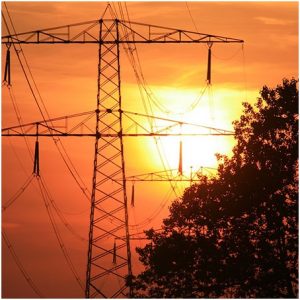Here’s an article by one of the member of our community. Just know that you too can write an article about whatever you want (eletrical topic but not electronics, debate, review, personal experience, showing your work, etc.).
If you’re interested, send it by mail.
Energy efficiency and conservation are the main endeavours of engineers, system planners as well as consumers. The shareholders are always on the quest for optimised energy transmission, distribution and usage. However, one of the hurdles is the need to change the existing equipment to accommodate the changes, as it tends to be costly, especially for large installations.
One of the easiest and least invasive ways to achieve the demand response while pursuing energy efficiency is through conservation voltage reduction (CVR).
Working Principle of conservation voltage reduction
Power supply companies must ensure that the last consumer in the service line receives power at the stated voltage. However, this tends to be difficult considering the line drop, especially for long feeder lines. The supply must thus be higher than the standard level to compensate for the losses.
A downside of this is that the first consumers on the line will thus receive higher voltages than required. CVR serves to ensure that the standard rate is delivered to all the consumers, regardless of the proximity to the source.
CVR works by optimising voltage supply on the feeder lines that lead from the substations to the consumers. Another facet of CVR is providing voltage on the lower threshold of the regulated standard. For example, if the standard voltage is 114-126, then the voltage is supplied on the lower range (114-116) rather than the upper range of the threshold (124-126). This ensures that consumers can still use their appliances, but saves on the overall cost of power.
Traditionally, this involved the addition of equipment to the service lines, reducing the length of the feeder lines, adding substations, as well as reducing voltage supply to home appliances during specific periods. It additionally involved manual switching of the capacitor banks or the component under use for CVR during the peak hours, mostly 4-5 hours and restoration to the initial voltage rate after the period.
Nowadays, engineers integrate components such as capacitors, line drop compensators, excitation controls, static VAR compensators and others with technology such as signal controls via SCADA for action and reaction.
Another way that CVR is implemented is by paying the consumers to reduce the energy consumption voluntarily during the peak load periods. In this case, the energy users act as virtual power plants through implementing measures to reduce their energy consumption, and in return receive incentives from the power suppliers.
Other benefits of conservation voltage reduction
Voltage delivery at optimised levels reduces wastage, promotes service quality and helps extend equipment longevity. Both the power suppliers and consumers thus save on costs through lower operating costs. Also, delivery at optimal levels promotes environmental conservation by reducing greenhouse gas emissions.
Electrical appliances are designed to work at optimised performance at a set voltage level (depending on the region). Any energy supply above this rate, though within the power suppliers’ standard range, is simply wasted. For example, if the power supplier provides voltages at a range between 114V-126V, the equipment will usually work best at a set rate, say 116V. If the power supplier provides 122V, then the extra power is wasted.
On the longevity issue, continuous high power usage takes a toll on electrical equipment, including home appliances. The extra energy usually converts to heat, which is detrimental to some electrical components. Thus, working at the lower end of the allowable spectrum helps increase the longevity of the components, thus saving the consumer and the supplier.
Thanks for reading,
Marvin M.
It was all for today! What did you think about this article?
